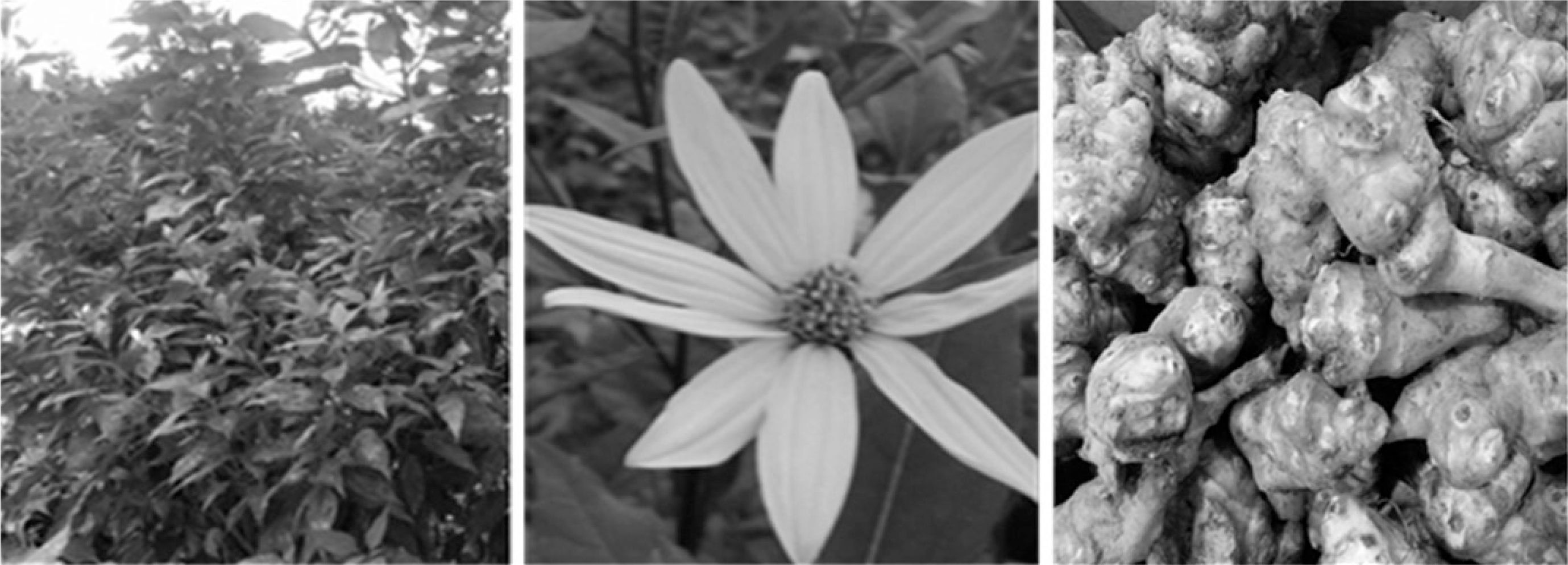Abstract
Jerusalem artichoke (Helianthus tuberosus L.) is hot topic recently because its tubers have been introduced as a beneficial food for decreasing glucose level. Therefore, this study focuses on providing accurate information about Jerusalem artichoke, its contents, and the effective way for diabetic patients to intake it.
The dietary fiber inulin is a considerable component in Jerusalem artichoke compared to other foods. It is indigestible by human enzymes and passes through much of the digestive system intact. Therefore it delays sharp increases of the glycemic index. Also, inulin is a soluble fiber able to increase bowel activity and the abundance of beneficial gut bacteria among other benefits. However, consumption of large quantities of inulin can lead to bloating and nutritional disorders. It is necessary to intake only a suitable amount. Jerusalem artichoke contains more soluble fiber than potato but is similar to potato in other components. Therefore, it is recommended to consider carbohydrate amount when replacing the usual menu. Using Jerusalem artichoke tuber powder as a cornstarch substitute in cooking helps reduce rise of the glycemic index. It is useful to control blood sugar with not only diet, regular exercise, and medicinal treatments, but also with exact knowledge of food and the proper way to effectively intake it.
Go to : 
References
1. Evert AB, Boucher JL, Cypress M, Dunbar SA, Franz MJ, Mayer-Davis EJ, Neumiller JJ, Nwankwo R, Verdi CL, Urbanski P, Yancy WS Jr; American Diabetes Association. Nutrition therapy recommendations for the management of adults with diabetes. Diabetes Care. 2013; 36:3821–42.
2. Shin SH, Kwon SJ, Jo HJ, Go DH, Han JJ. Extraction and analysis of inulin from jerusalem artichoke. Food Sci Ind. 2012; 45:50–8.
4. Creative Commons Attribution-Share Alike License. Wikipedia. Available from:. http://en.wikipedia.org/wiki/Inulin. (updated 2014 Oct 12).
5. Food and Agriculture Organization of the United Nations. Food composition Tables for the Near East [Internet]. Rome: Food and Agriculture Organization of the United Nations;1982. [cited 2014 Nov 10]. Available from:. http://www.fao.org.
7. Abrams SA, Griffin IJ, Hawthorne KM, Liang L, Gunn SK, Darlington G, Ellis KJ. A combination of prebiotic short- and long-chain inulin-type fructans enhances calcium absorption and bone mineralization in young adolescents. Am J Clin Nutr. 2005; 82:471–6.

8. Coudray C, Demigné C, Rayssiguier Y. Effects of dietary fibers on magnesium absorption in animals and humans. J Nutr. 2003; 133:1–4.

9. Coussement PA. Inulin and oligofructose: safe intakes and legal status. J Nutr. 1999; 129(7 Suppl):1412S–7S.

10. Bonsu NK, Johnson CS, McLeod KM. Can dietary fructans lower serum glucose? J Diabetes. 2011; 3:58–66.

11. Rural Development Administration. Food composition table [Internet]. Wanju: National Academy of Agricultural Science;2011. [cited 2014 Nov 10].
12. Chandalia M, Garg A, Lutjohann D, von Bergmann K, Grundy SM, Brinkley LJ. Beneficial effects of high dietary fiber intake in patients with type 2 diabetes mellitus. N Engl J Med. 2000; 342:1392–8.

13. Park SH, Lee KS, Park HY. Dietary carbohydrate intake is associated with cardiovascular disease risk in Korean: analysis of the third Korea National Health and Nutrition Examination Survey (KNHANES III). Int J Cardiol. 2010; 139:234–40.

14. American Diabetes Association. Standards of medical care in diabetes-2014. Diabetes Care. 2014; 37(Suppl 1):S14–80.
15. The Korean Nutrition Society. Dietary reference intakes for Koreans-first revision. Seoul: The Korean Nutrition Society;2010. p130.
Go to : 




 PDF
PDF ePub
ePub Citation
Citation Print
Print



 XML Download
XML Download